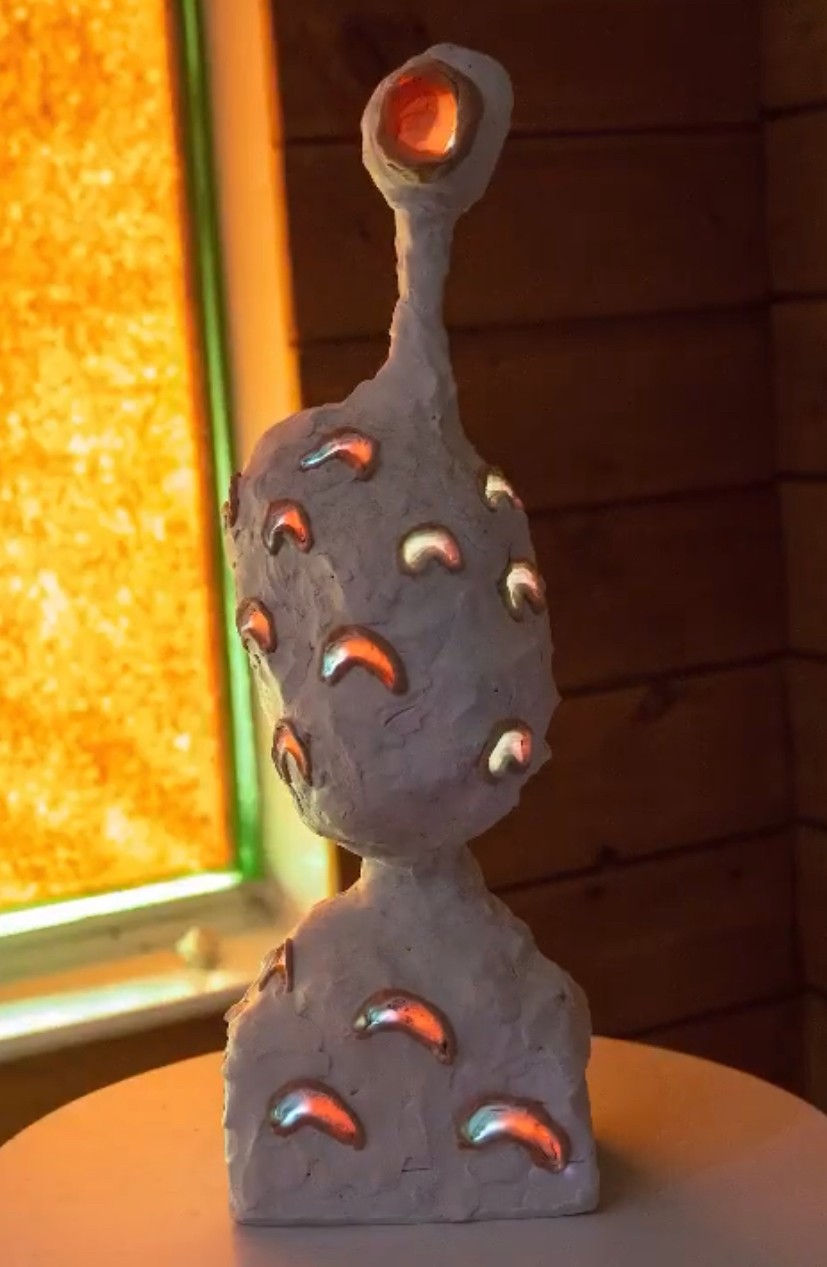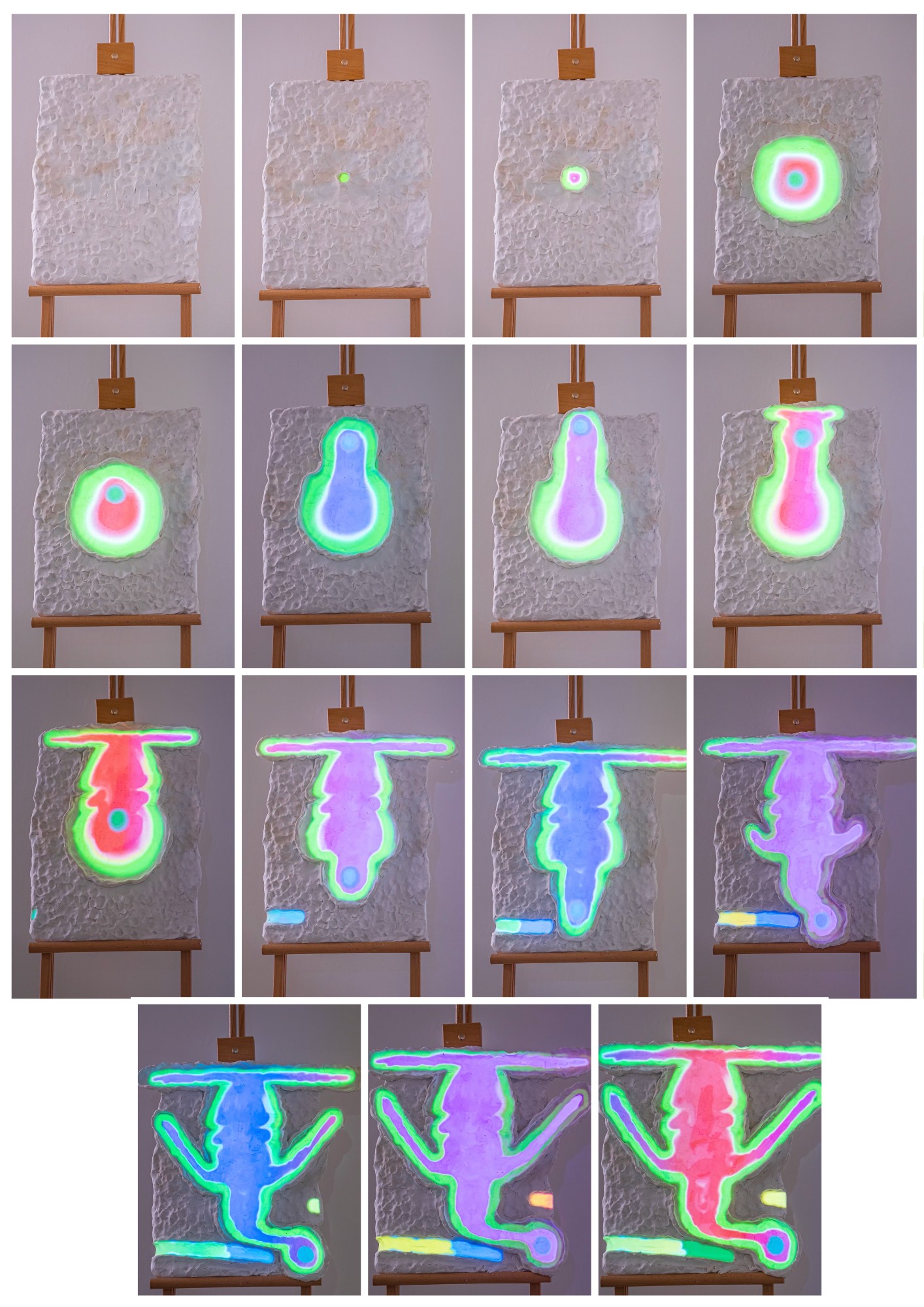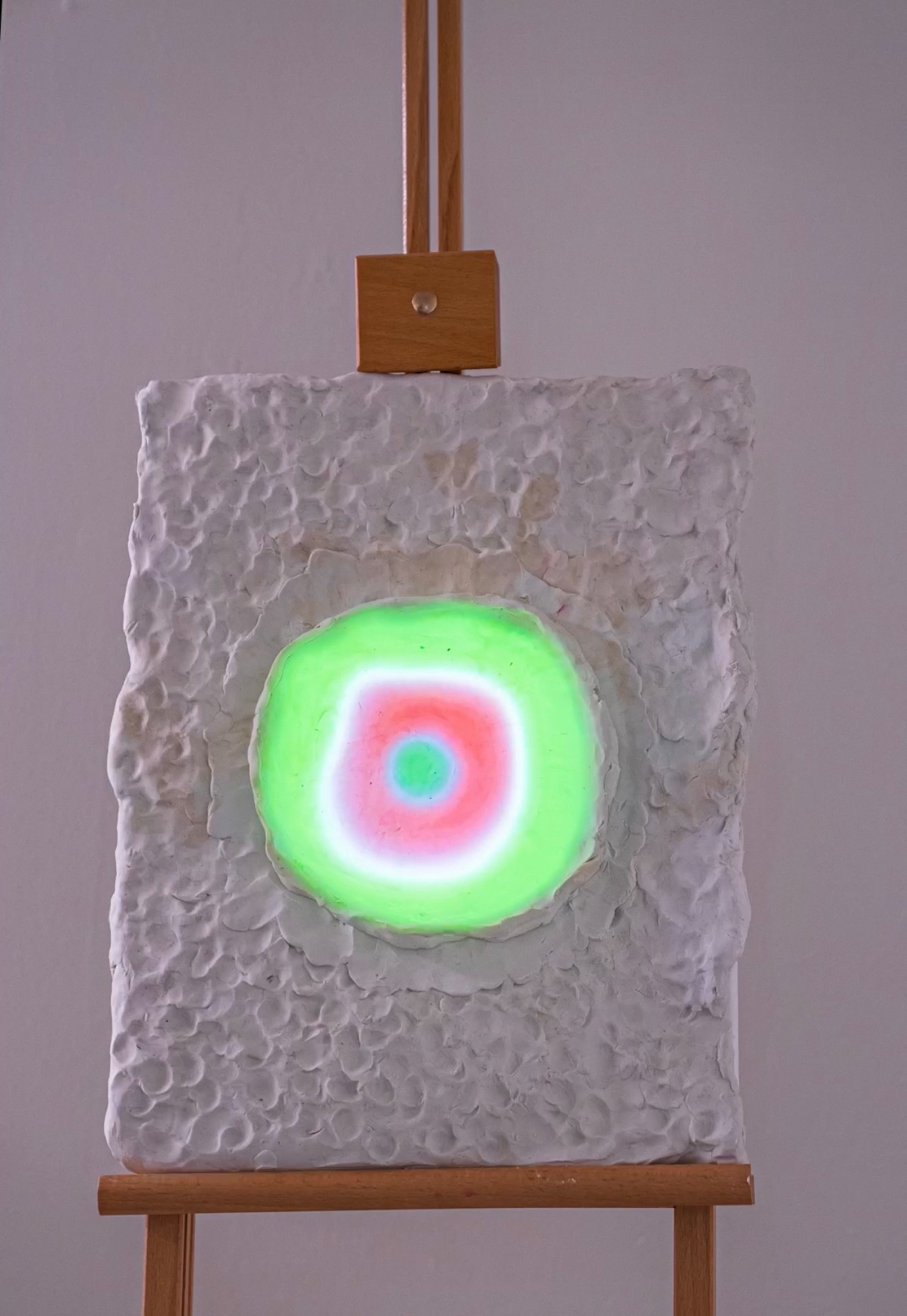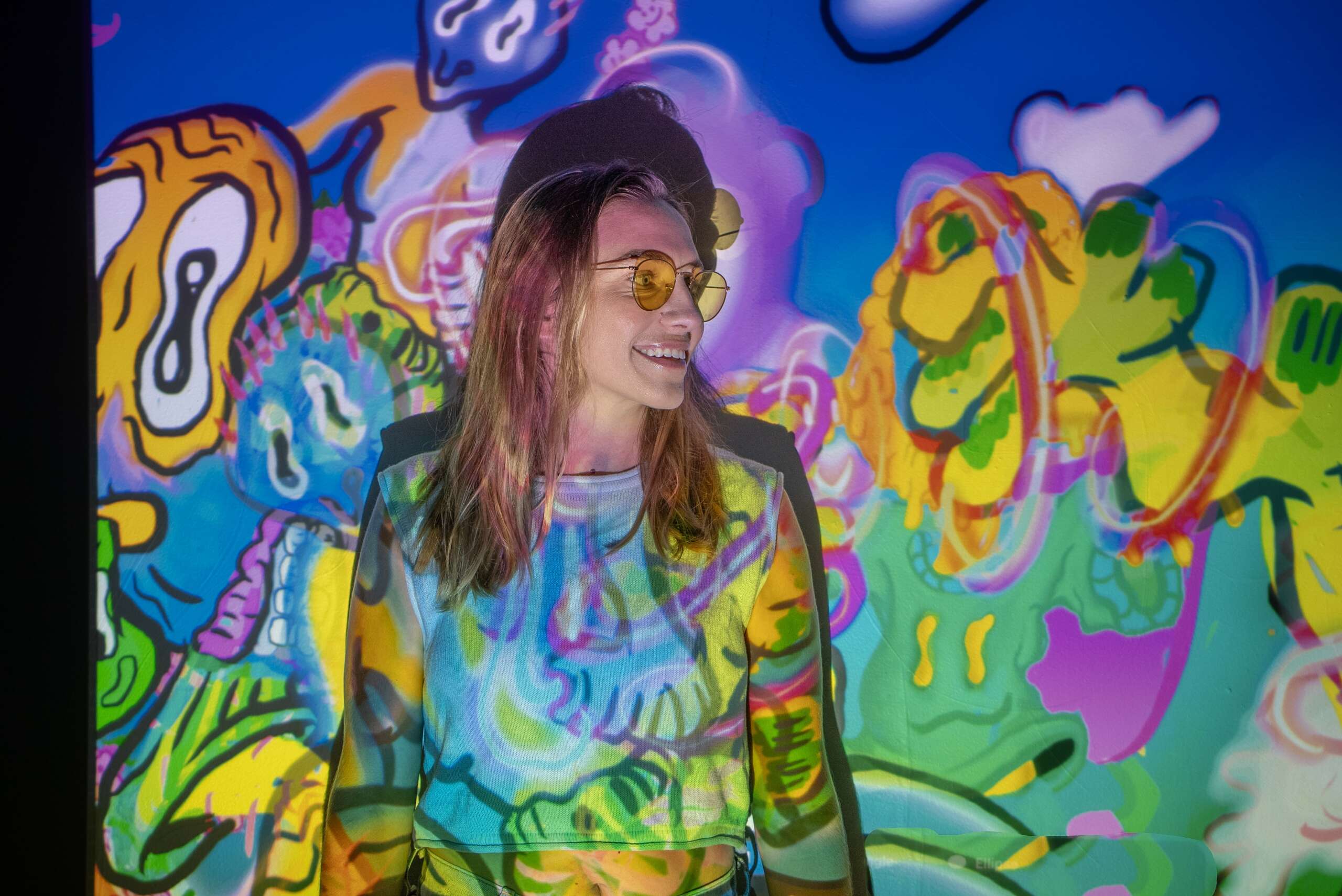Alright – so today we’ve got the honor of introducing you to Casey Alfstad. We think you’ll enjoy our conversation, we’ve shared it below.
Alright, Casey thanks for taking the time to share your stories and insights with us today. How did you learn to do what you do? Knowing what you know now, what could you have done to speed up your learning process? What skills do you think were most essential? What obstacles stood in the way of learning more?
I stumbled into learning projection mapping and video art design. I had worked at galleries and one had given me a projector they had replaced. I kept it and used it to curate short film screenings in someone’s yard, then had it sitting in my room when I moved to Texas. A musician friend was over and seeing it asked if I could do the visuals on his band for a house show that weekend. We spent the day making a choppy water color stop-motion and projected it on a few bands that weekend. From there I started experimenting with the projector using photoshop to play with the areas where light wouldn’t show, my roommate worked in concert lighting saw what I was doing and told me “it’s called projection mapping, there’s a program for that – Resolume”. From then on I deep dove into it and curated art shows in my house that utilized it. People were interested in projection as a tool, it plugged me into exhibit opportunities, stage design gigs, immersive jobs etc.
I ended up doing a lot of different new media realm projects word of mouth from animation to AR, but I found the best traction when I turned off the extra running faucets and focused in projection mapping, video art and exhibit design.
I think we assume things are more complicated than they are, now a days there’s an app for that, or a program that does the heavy lifting. If you know how to be solution focused and google search thoroughly you can navigate through almost any creative program or media player. You don’t have to know every program from front to back, you just need to know the few steps that allows you to do the specific thing you’re intending.


Casey , love having you share your insights with us. Before we ask you more questions, maybe you can take a moment to introduce yourself to our readers who might have missed our earlier conversations?
What problems I solve for clients?
I like helping to make ideas physical. A lot of the time, a curator or artist will have an idea but are not sure how to achieve it. We work in concept development or studio testing phases together and then fabricate a physical artwork or media exhibition.
There are a lot of really talented knowledgable lighting designers and media technicians out there and they are incredible. But I don’t work in concerts, I design specifically in art galleries and high concept spaces on specific sculptures rather than huge stages. I study media exhibit design at art fairs and museums constantly. I consider my speciality not in the tech integration part but more so in the creative facilitation and concept design parts of media art development.
The goal is always to translate and expand an artists practice, to enliven their mediums through digital palettes and really amplify their styles through the tools.

Alright – so here’s a fun one. What do you think about NFTs?
Haha. I actually own a few NFT’s by an incredible artist whose growth has only increased in the past few years I’m happy to say. I think NFT’s get a bad rap. People say “nfts are ugly” but so is some traditional art and some music is bad- it doesn’t make all music bad. There’s a huge spectrum of quality and preference within all creative mediums. People also say “but you’re just buying a digital picture, someone can screen shot it and have it too” I don’t understand that argument, because I can also go to a museum and take a picture of painting that sold for 2 million dollars — it doesn’t take away from its value. I think it’s cool to embrace different ways that art can exist, NFT’s are kinda out right now but they will be back. QR codes were dead at one point also and the quarantine culture revived them for good and now they are here to stay.
There’s a lot of poor branding around NFT’s that take away from the fact that it was offering an alternative financial system and creating new avenues for artists to have autonomy and connect directly with their collector communities. I think we can all benefit from being more open minded to new ways of doing things. We’re all part digital now whether we enthusiastically embrace that identity or not.

In your view, what can society to do to best support artists, creatives and a thriving creative ecosystem?

Contact Info:
- Website: Www.freeverbs.com
- Instagram: @caseyalfstad
Image Credits
Most of the images are still frames of my claymation light sculptures. The image with the two seated figures: Immersive space “Geraldine’s Place” exhibited with Art 84. (My role: New Media Director) The image with the clouds: Immersive Video Art Screening “Video Picnic” exhibited at Martha’s ATX. (My role: Co-curator and New Media Designer)


